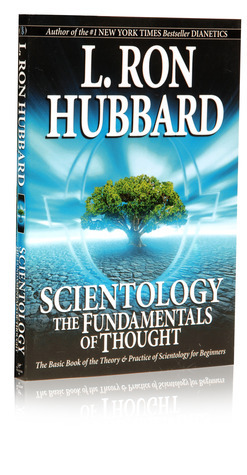
Dianetics: The Original Thesis
Book Description
Imagine uncovering the secrets of the mind, a revolutionary path to personal freedom and enlightenment. In "Dianetics: The Original Thesis," L. Ron Hubbard unveils a groundbreaking exploration of the human psyche, exposing the hidden barriers that keep us from reaching our true potential. With compelling insights and practical techniques, this provocative work invites readers to confront their innermost fears and reclaim their lives from emotional turmoil. As humanity grapples with the weight of unresolved trauma, can one bold theory offer the key to a brighter, unshackled future? Dare to discover what lies beneath the surface of consciousness.
Quick Book Summary
"Dianetics: The Original Thesis" by L. Ron Hubbard is a foundational work that explores the dynamics of the human mind and introduces the principles of Dianetics. Through a blend of science, philosophy, and spirituality, Hubbard outlines the structure of the mind into analytical and reactive components. He examines how past traumatic experiences, which he terms "engrams," can become obstacles to rational thought and emotional well-being. The book presents processes for identifying and clearing these mental barriers, promising greater clarity, personal freedom, and improved mental health. Hubbard's thesis propelled a movement that challenged conventional psychology by offering readers practical tools for self-discovery and control over their own consciousness.
Summary of Key Ideas
Table of Contents
The Structure of the Mind: Analytical vs. Reactive
L. Ron Hubbard begins by breaking down the architecture of the human mind into two principal spheres: the analytical and reactive minds. The analytical mind operates logically, handling data and decision-making, while the reactive mind stores traumatic memories, or engrams, which can override rational thought and drive irrational behavior. By distinguishing between these spheres, Hubbard sets the foundation for understanding how individuals can be held back by emotional obstacles encoded in their psyche.
The Concept and Impact of Engrams
Central to Dianetics is the concept of engrams—deep-seated mental recordings formed during moments of pain and unconsciousness. These engrams lie beneath the surface of awareness, influencing thoughts, emotions, and actions in unpredictable ways. Hubbard posits that many psychological and psychosomatic issues stem from engrams, which persist until confronted and neutralized. This core idea suggests that much of human suffering is resolvable through targeted introspective work rather than passive adaptation or pharmaceutical intervention.
The Auditing Process: Clearing the Mind
To address these hidden barriers, Hubbard introduces auditing: a structured form of counseling focused on revisiting and re-examining past traumatic incidents. During auditing sessions, individuals use a guided recall process to uncover and process engrams. The transparency and repetition within the procedure aim to bring unconscious memories into conscious understanding, thereby diminishing their power and ultimately "clearing" the individual. This hands-on methodology is presented as both accessible to readers and pivotal for lasting self-improvement.
Pathways to Personal Freedom and Self-Improvement
Through the application of Dianetics, Hubbard asserts that individuals can achieve a "Clear" state—freedom from the constraints of reactive engrams. In this liberated condition, a person experiences heightened awareness, emotional stability, and resilience against new traumas. The book emphasizes the role of personal responsibility and continuous self-examination, affirming that everyone has the inherent capacity to take control of their mental and emotional destiny.
Challenging Traditional Views on Mental Health
Hubbard’s work was both groundbreaking and controversial, as it challenged established norms in psychology and psychiatry. He critiques prevailing medical and therapeutic approaches to mental health, advocating instead for a model rooted in personal exploration and peer-to-peer support. "Dianetics: The Original Thesis" remains a seminal text, inspiring readers to question the origins of their limitations and to seek transformative change through disciplined introspection and practice.
Download This Summary
Get a free PDF of this summary instantly — no email required.





